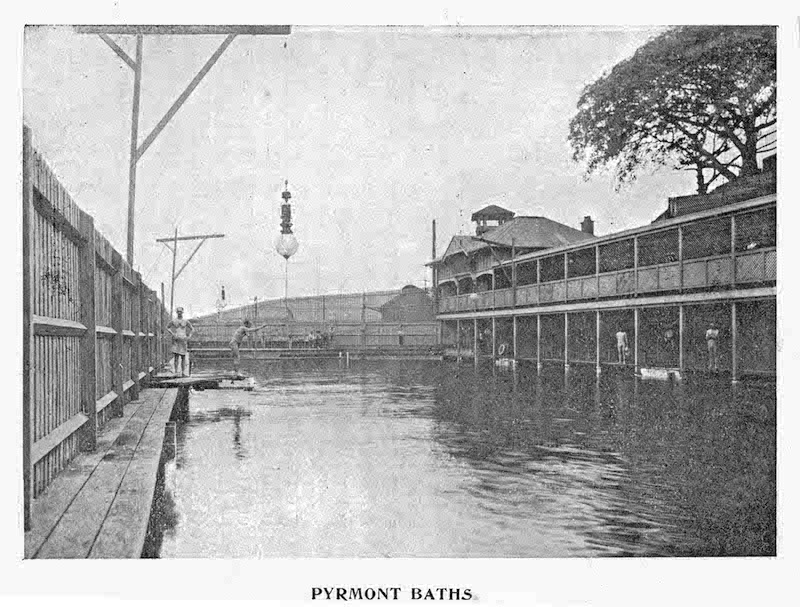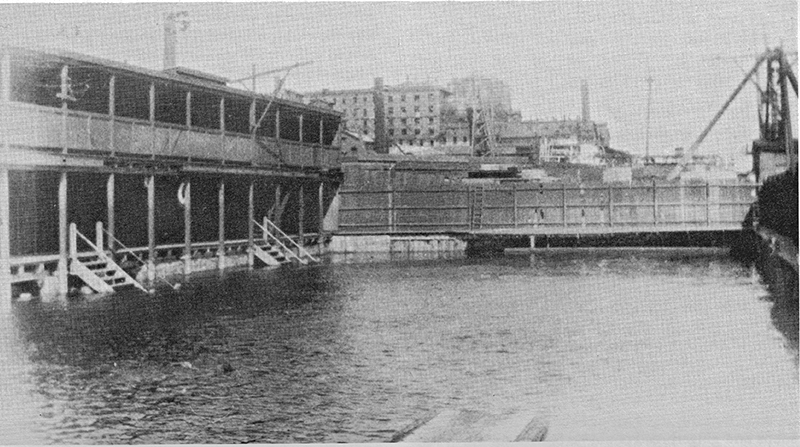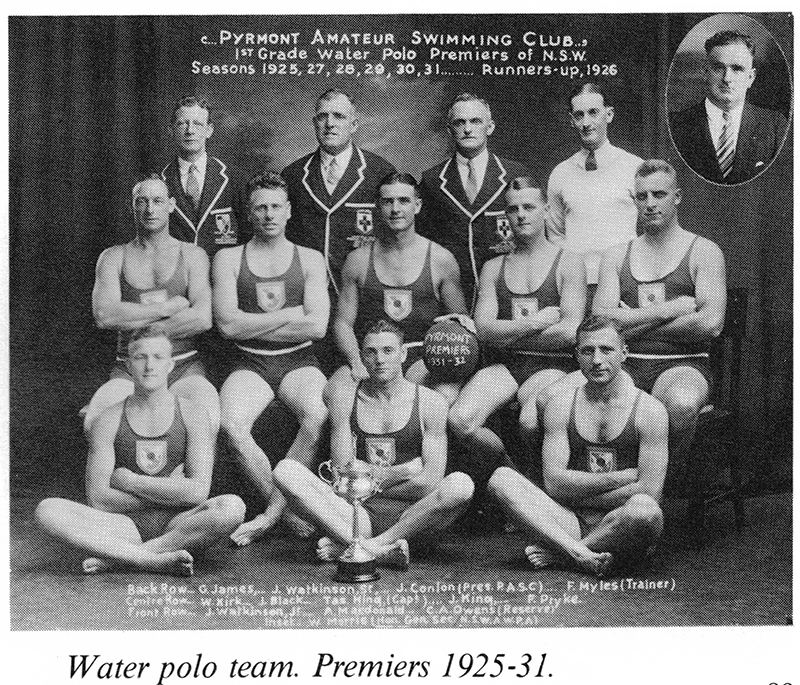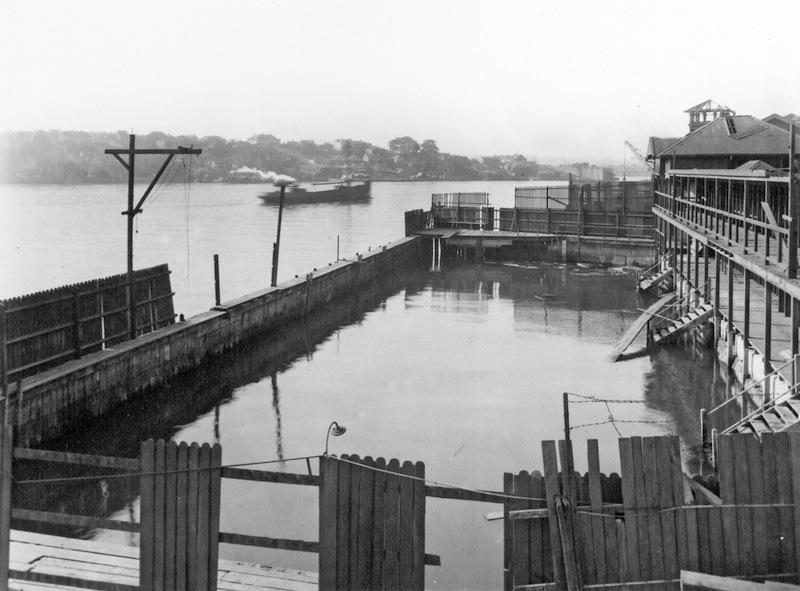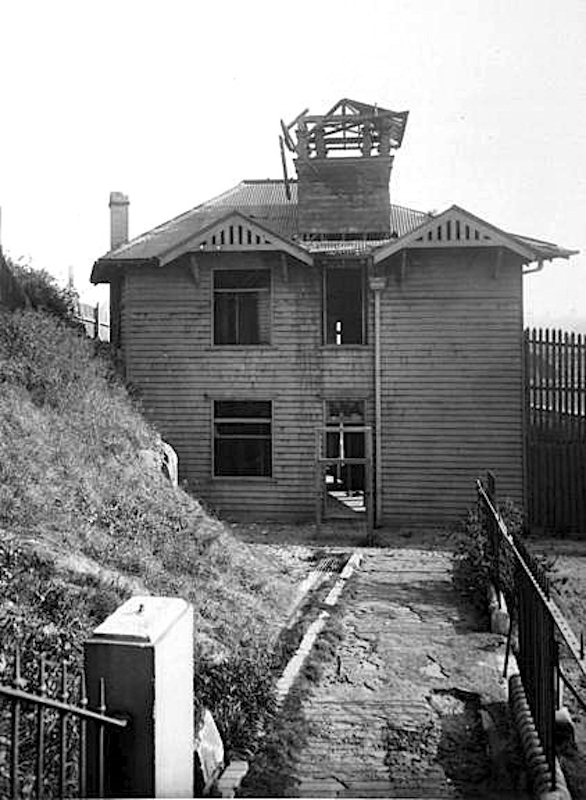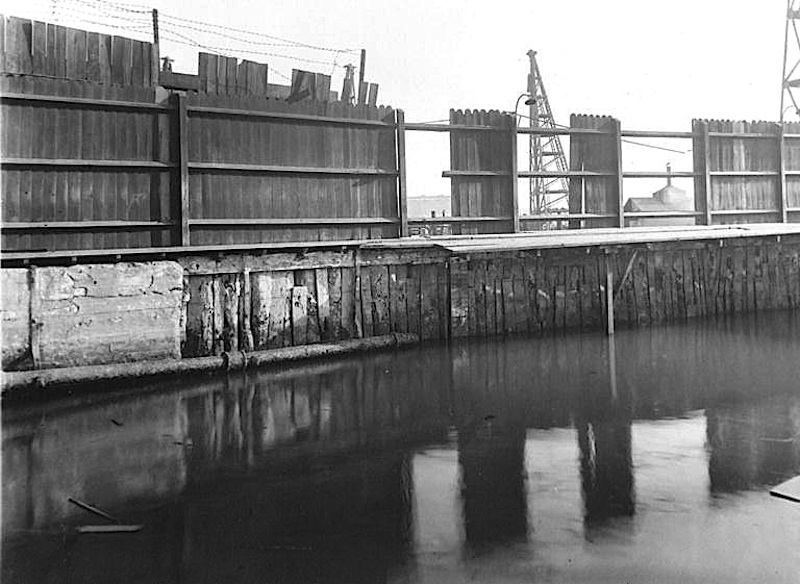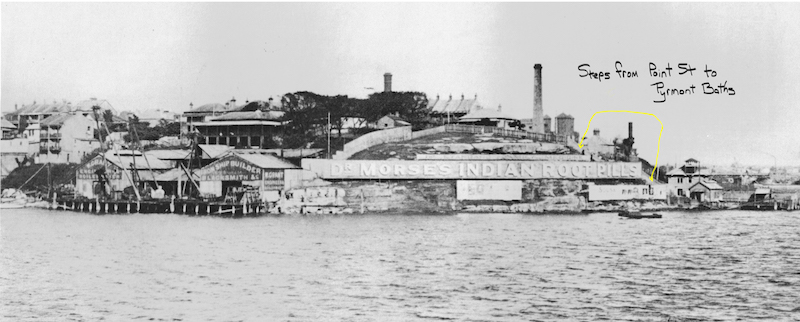Locations > Pyrmont Baths
Pyrmont Baths
The history of the Pyrmont baths from their opening in 1877 to their demolition in 1946 was a remarkable journey. They rose to prominence in the early 1900s as one of the finest ocean baths in Sydney, for coaching and showcasing champion swimmers, and providing an important meeting and recreational space. Amid factories, warehouses, shipping wharves and daily pollution, the baths gave the community a place of its own.
The baths were built in 1877 and mostly used by men although women were admitted during limited hours after 1884. The baths were rebuilt and extended in 1902 and declared “as clean as any seen around the harbour” by Councillors in 1906. By then sewage was being pumped to Bondi. The baths were 50 yards long and 6-12ft deep (reaching 18ft in high tides). The shore building contained 85 dressing rooms, showers, club rooms, refreshment rooms and a gym. A promenade with a 10ft side ran the full length of the baths allowing spectators to view swimming contests. Little wonder that the baths at Woolloomooloo rebuilt in 1908 were modelled on Pyrmont’s.
This was where schoolchildren learnt to swim, carnivals were held and inter-club championship events regularly featured swimming greats, Dick Cavill, Moss Christie and Boy Charlton.
There were many heroes and casualties. Newspapers reported all these with such personal detail, the sense of the courage and bravery of so many residents, that the community of 1898 was not much different from the one in the 1930s when local hero Jim Watkinson, coach of the champion Pyrmont Water Polo team, petitioned the Sydney Harbour Trust for a stay of execution on their demolition. Unfortunately, it was a losing battle. The Depression reduced the immediate need to expand the wharves but let the baths fall into terrible disrepair. They were eventually demolished in 1946.
Shirley Fitzgerald’s book Pyrmont & Ultimo Under Siege quotes a long time Labor party supporter, asked in 1993 why support for Labor had declined, explained: “they got rid of the baths”.
Related Items
Further Reading


